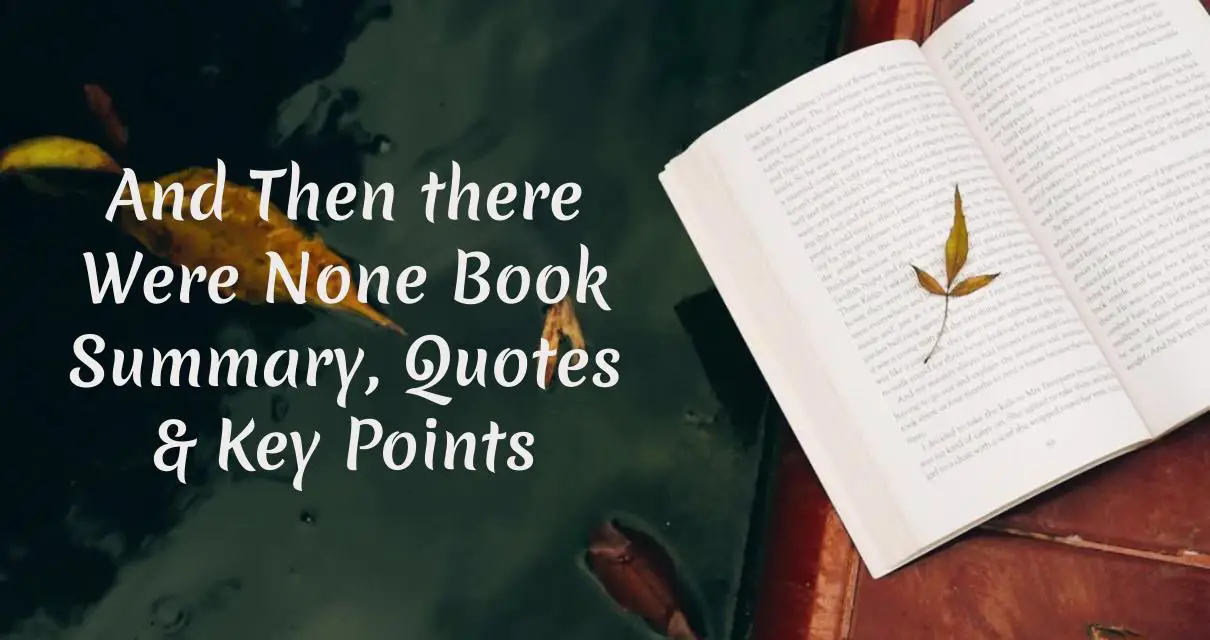And Then There Were None by Agatha Christie is a classic mystery novel that has captivated readers for decades. The story takes place on a remote island off the coast of Devon, England, where ten strangers have been invited for a weekend getaway. However, as the guests arrive, they soon realize that they have been lured to the island under false pretenses and that they are not alone. One by one, the guests begin to die, and it becomes clear that the killer is among them.
Table of Content
And Then There Were None Book Summary
Plot Summary
The plot of And Then There Were None revolves around the ten strangers who have been invited to the island. They are all from different walks of life and have no apparent connection to one another. As they settle in, they discover that their host is not present and that they are stranded on the island. Soon after, they begin to die one by one, and it becomes clear that the killer is among them. As they try to uncover the identity of the murderer, they realize that they are running out of time.
Themes
The main themes of the book include justice, guilt, and the nature of evil. The characters are forced to confront their past actions and the consequences of their choices. The book explores the idea that justice is not always served and that guilt can consume a person. The nature of evil is also a central theme, as the characters try to understand the motives of the killer and the darkness that lies within human nature.
Symbolism
The book uses several symbols, including the nursery rhyme, the ten figurines, and the storm. The nursery rhyme serves as a foreshadowing of the events to come, while the figurines represent the deaths of the characters. The storm symbolizes the chaos and danger that the characters face on the island.
Mystery and Suspense
The author creates mystery and suspense throughout the book by using red herrings and plot twists. The reader is kept guessing as to the identity of the killer, and the plot twists keep the story engaging and unpredictable.
Writing Style
Agatha Christie's writing style is characterized by her use of foreshadowing, dialogue, and descriptive language. She creates a sense of tension and unease through her use of language, and her dialogue is realistic and engaging.
And Then There Were None Book Review
Plot Twist
The plot twist at the end of the book is one of the most memorable moments in the story. It completely changes the reader's perception of the events that have taken place and leaves a lasting impression.
Character Development
The characters in the book are well-developed, and their motivations and actions are believable. The reader is able to empathize with the characters and understand their struggles.
Overall Impression
And Then There Were None is a well-written and engaging mystery novel. The plot is intricate and unpredictable, and the characters are well-developed. The book is a classic for a reason and is a must-read for fans of the mystery genre.
And Then There Were None Quotes
"Ten little Indian boys went out to dine; One choked his little self and then there were nine."
"It is a silly habit, I daresay, but somehow it seems to bring a great deal of romance into one's life."
And Then There Were None Key Points
Red Herrings
The use of red herrings in the book adds to the mystery and keeps the reader guessing as to the identity of the killer.
The Nursery Rhyme
The nursery rhyme serves as a foreshadowing of the events to come and adds to the overall sense of unease in the book.
The Ending
The ending of the book is a plot twist that completely changes the reader's perception of the story and leaves a lasting impression.
FAQs for And Then There Were None
1. Who is the murderer in the book?
The identity of the murderer is revealed at the end of the book.
2. What is the significance of the storm?
The storm symbolizes the chaos and danger that the characters face on the island.
3. Why did the characters receive invitations to the island?
The characters were lured to the island under false pretenses.
4. What is the meaning behind the nursery rhyme?
The nursery rhyme serves as a foreshadowing of the events to come.
5. How does the author create suspense throughout the book?
The author uses red herrings and plot twists to keep the reader guessing.
6. What is the role of guilt in the story?
Guilt is a central theme in the book and is explored through the characters' past actions and choices.
7. How does the author use foreshadowing?
The author uses foreshadowing through the nursery rhyme and other symbols in the book.
8. What is the significance of the figurines?
The figurines represent the deaths of the characters.
9. How does the author create a sense of claustrophobia on the island?
The isolated setting of the island and the limited number of characters create a sense of claustrophobia and tension.
10. What is the impact of the plot twist on the reader?
The plot twist completely changes the reader's perception of the story and leaves a lasting impression.

